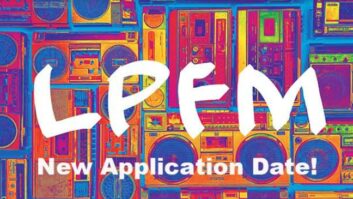The FCC has begun granting permission to organizations for further increased FM IBOC power testing.
On the Radio World Webinar “What to Watch for in 2009” yesterday, both Milford Smith of Greater Media and Mike Starling of NPR said their companies have further tests planned.
Smith later told me WKLB(FM) in Boston has experimental authority to operate its digital power at up to minus 10 dB (from the current –20 dB below analog carrier up to –10 dB).
“I’m optimistic we are going to find a middle ground,” he said, referring to differences between the testing of the major, mostly commercial radio groups who petitioned the FCC for the change and that of NPR Labs regarding the proposed voluntary digital power increase of up to 10 dB. The increase, Smitty said, needs to be enough of an improvement to solve most of the issues we’ve got now — having digital coverage match the analog.
Talks are ongoing among the broadcast groups that initially asked the FCC to approve a voluntary increase, and iBiquity, NAB, the FCC and NPR, according to Starling and Smith.
“The faster we get to an industry consensus the better. The FCC would love a red-ribbon package on their doorstep with a solution,” said Smith.
Starling said NPR plans additional testing with Minnesota Public Radio and also two NPR-member stations. “We know we’ve got to solve this indoor coverage shortfall. An unhappy listener is a failed transition.” Maybe a controlled increase at a compromise level, coupled with other options is the answer, he indicated.
NPR Labs wants to look at single-frequency networks and asymmetrical digital sidebands … perhaps a station with a first-adjacent neighbor only raises the digital sideband without a neighbor station, is the theory. All parties may have a solution by spring/summer timeframe, they said.
If you’d like to hear the Webinar, you can listen at our newly re-designed site.










